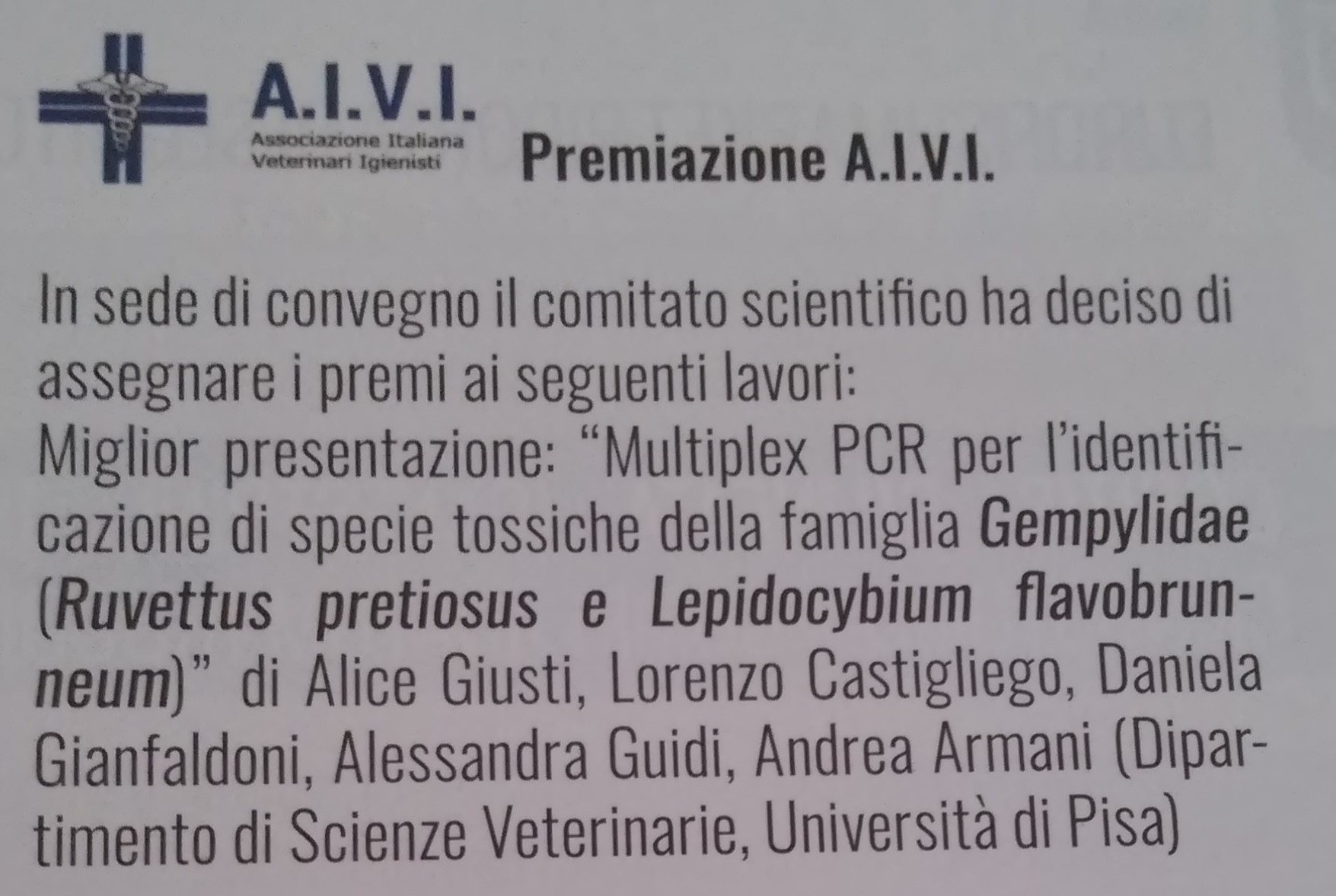|
Ruvettus pretiosus and Lepidocybium flavobrunneum belong to the family Gempylidae. Both of them are species of big dimension, often caught during species fishing, such as tunas and swordfishes. Characterized by a high level of complex lipids, particularly wax esters, they are responsible for a toxic effect defined oily diarrhoea. For this reason many Countries, among whichEurope, have introduced legislation that regulates their marketing. In fact, this two species are often sold as slices and fillets and for this reason a “mislabelling” could occur. The aim of this project is to develop a multiplex PCR for the identification of Gemfish and other species among those frequently mis-labeled on the market. The method will be available for use by private companies and government in Italy and elsewhere to improve consumer confidence in seafood supplies and the regulation of the fishing industry. . PUBLICATIONS Giusti, A., Castigliego, L., Rubino, R., Gianfalodni, D., Guidi, A., & Armani, A. (2016). A Conventional Multiplex PCR assay for the detection of toxic Gemfish species (Ruvettus pretiosus and Lepidocybium flavobrunneum): a simple method to combat health frauds. Journal of agricultural and food chemistry, 64 (4), pp 960–968 |
| Il Ruvettus pretiosus ed il Lepidocybium flavobrunneum sono specie di grandi dimensioni, spesso catturate durante la pesca di tonni e pesci spada, che appartengono alla famiglia Gempylidae. Entrambe le specie sono caratterizzate da un elevato livello di lipidi complessi a livello muscolare, in particolare esteri di cere, che se ingeriti, determinano un effetto tossico caratterizzato da diarrea oleosa. Per tale ragione, molti enti governativi tra cui l’Unione Europea, hanno introdotto delle disposizioni legislative che ne regolamentano il commercio. Queste due specie sono spesso vendute in tranci o filetti e per tale motivo possono essere oggetto di sostituzione fraudolenta. L’obiettivo di questo progetto è quello di sviluppare una metodica Multiplex PCR per l’identificazione di questi Gemfish e di altre specie ittiche commerciali con le quali possono essere sostituiti. Una volta sviluppata tale metodica potrà rappresentare un’utile strumento, sia per le aziende private che per le autorità governative nazionali e internazionali, al fine di aumentare la fiducia dei consumatori garantendo la corretta applicazione della normativa sulla tracciabilità prevista per il comparto ittico.
. Giusti, A., Castigliego, L., Rubino, R., Gianfalodni, D., Guidi, A., & Armani, A. (2016). A Conventional Multiplex PCR assay for the detection of toxic Gemfish species (Ruvettus pretiosus and Lepidocybium flavobrunneum): a simple method to combat health frauds. Journal of agricultural and food chemistry, 64 (4), pp 960–968 |


